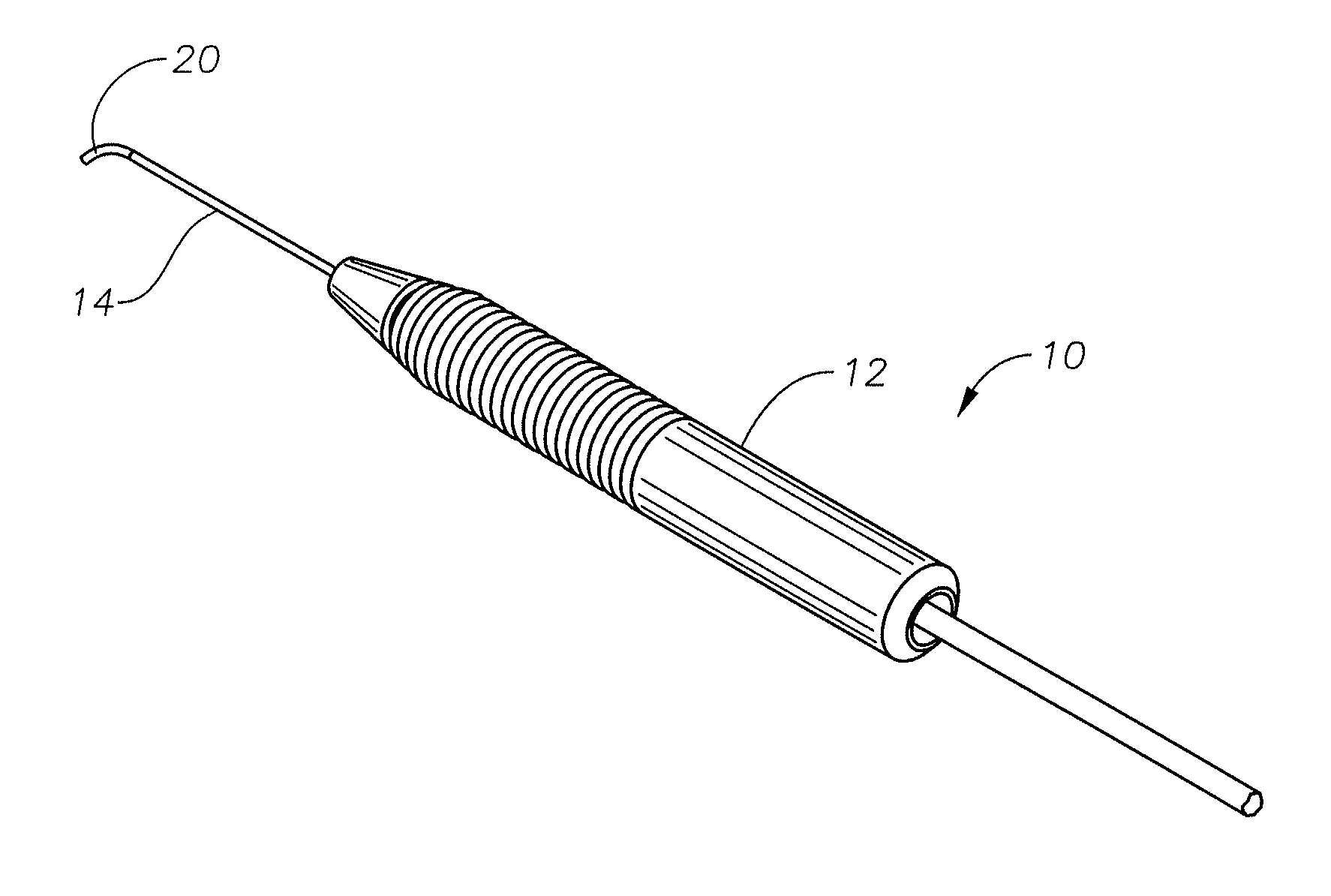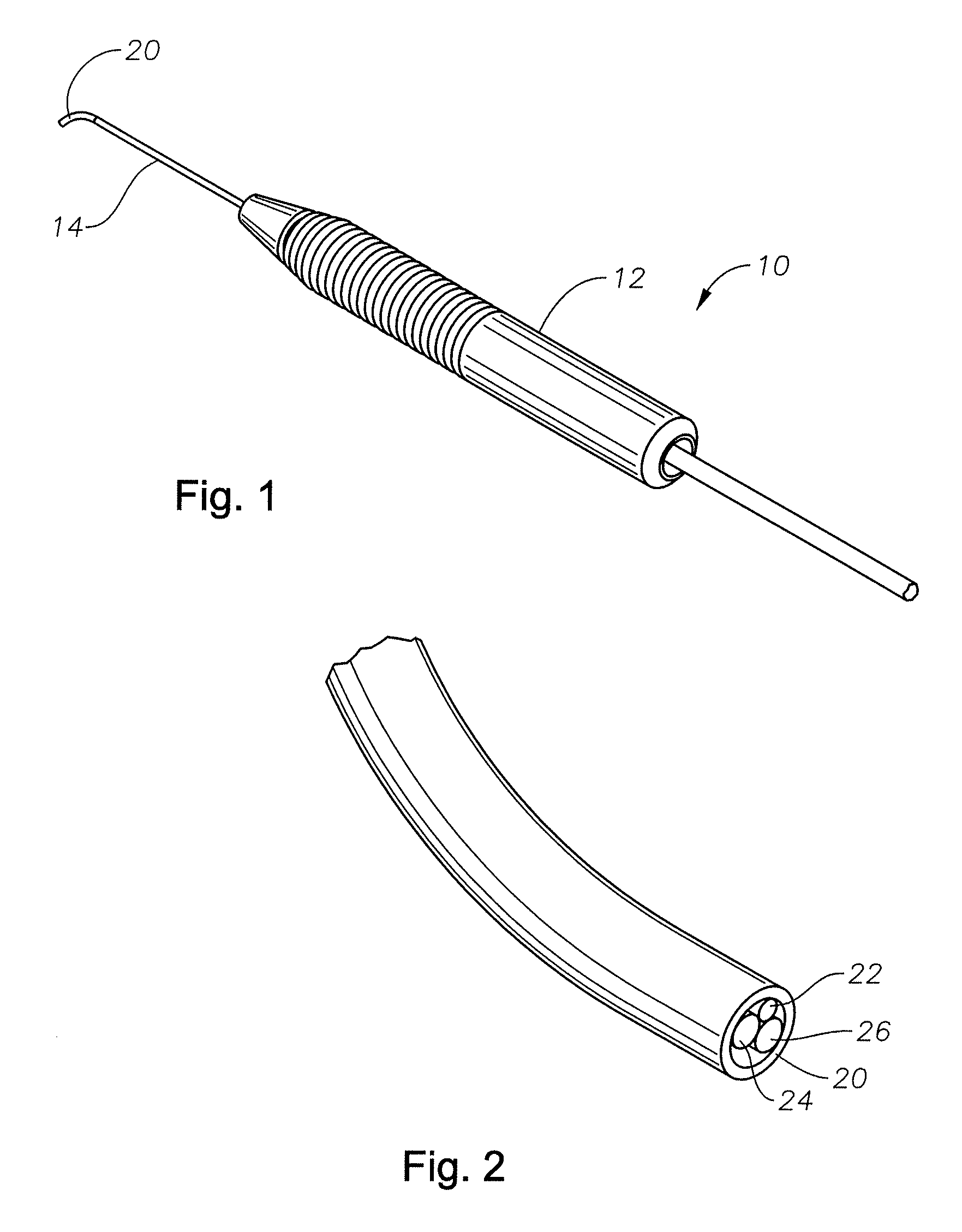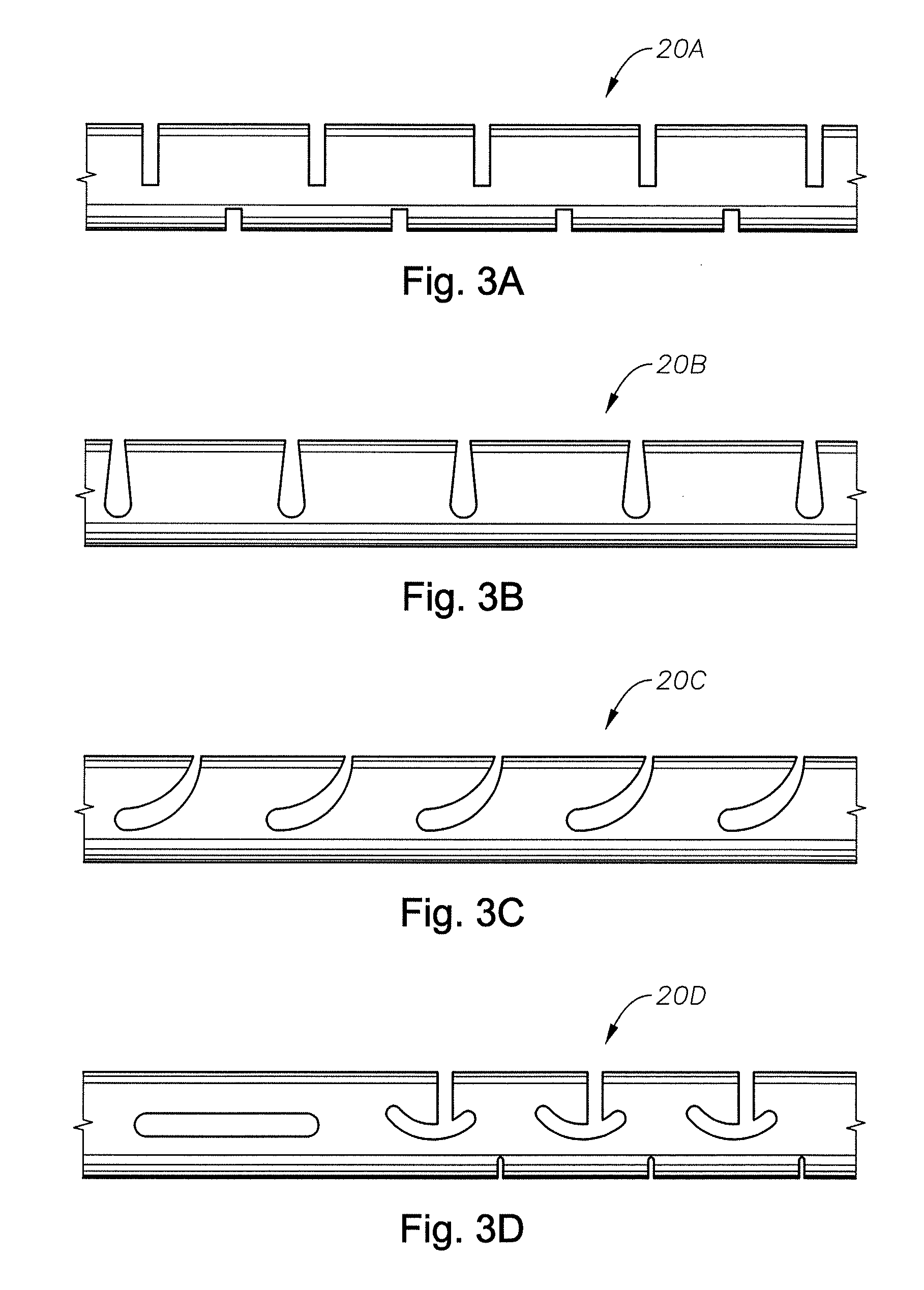Articulating ophthalmic surgical probe
a surgical probe and ophthalmology technology, applied in the field of ophthalmological surgical equipment, can solve the problems of large bend radius and large distal tip diameter with significant bend stiffness, trauma to the eye at the incision site, and the articulation mechanism,
- Summary
- Abstract
- Description
- Claims
- Application Information
AI Technical Summary
Benefits of technology
Problems solved by technology
Method used
Image
Examples
Embodiment Construction
[0014]Various embodiments of the present invention may avoid difficulties associated with previous articulating optical surgical probes. In particular, certain embodiments of the present invention may provide a single rigid cannula with a small diameter not only capable of insertion into very small incisions but also capable of articulating in a controlled fashion through a range of angles. Thus, such embodiments of the present invention combine the advantages of a relatively rigid articulating optical surgical probe with the controllable articulation of dual cannula probes that require a larger diameter.
[0015]Particular embodiments of the present invention include a single rigid cannula with a slotted tip of resilient material secured to a pull wire. Tension in the pull wire causes the slotted tip to bend in a particular direction, while releasing the tension allows the resilient tip to restore to its straight position. Pull-wire technology has been used previously to deviate a dis...
PUM
 Login to View More
Login to View More Abstract
Description
Claims
Application Information
 Login to View More
Login to View More - R&D
- Intellectual Property
- Life Sciences
- Materials
- Tech Scout
- Unparalleled Data Quality
- Higher Quality Content
- 60% Fewer Hallucinations
Browse by: Latest US Patents, China's latest patents, Technical Efficacy Thesaurus, Application Domain, Technology Topic, Popular Technical Reports.
© 2025 PatSnap. All rights reserved.Legal|Privacy policy|Modern Slavery Act Transparency Statement|Sitemap|About US| Contact US: help@patsnap.com



